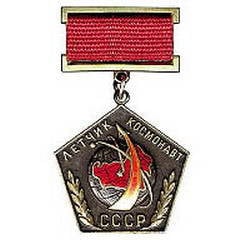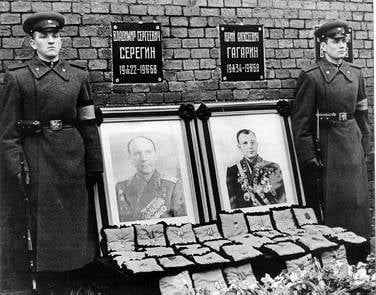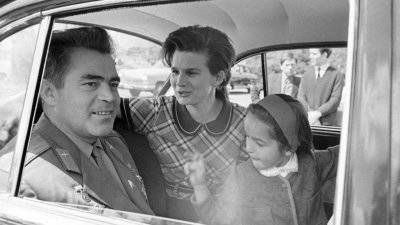Myths and reality of the national astronautics
 Space development has always been the subject of special attention not only to the government of the USSR, but also to the world community in alliance with the press and other media. And after 12 on April 1961, the first flight of the Vostok satellite rocket with a man on board into outer space took place, interest in this topic grew to an extraordinary size.
Space development has always been the subject of special attention not only to the government of the USSR, but also to the world community in alliance with the press and other media. And after 12 on April 1961, the first flight of the Vostok satellite rocket with a man on board into outer space took place, interest in this topic grew to an extraordinary size.With the advent of the first people who had the opportunity to see our Earth from outer space, fantastic legends and fictitious stories began to be born everywhere, tales, often based on completely unrelated circumstances, and sometimes simply not having any rational basis. The birth of the myths around these heroic personalities, as well as programs for the exploration of near-Earth space, was greatly facilitated by the situation of the strictest secrecy, which for obvious reasons always surrounded and surrounds the space developments and all the people involved. And the more access to the mysterious information gets humanity, the more unthinkable become stories. And once broken by experts in tatters, flimsy stories have a peculiarity to come back with time, once again disturbing the restless public, so eager for sensations.
The most popular tale widely publicized by foreign media was the version that Gagarin is far from the very first cosmonaut of our planet. The purpose of such writing during the years of “cold” confrontation was to completely blacken our space projects, which achieved tremendous success. The peak of this crazy theory was the corresponding entry in the Guinness Book of Records of the 1964 year of publication, where Vladimir Ilyushin, the son of a famous designer, was named as the first person to fly into space.
The story of the brave pilot, who in reality was not even a member of the first astronaut corps, was complemented by the horrific facts of his death. According to one version, the tragedy occurred due to a malfunction during the flight, according to another - the pilot survived and managed to land in China, where he was captured and tortured for many months, from which he died without giving out any state secrets. This extravagant version was first publicized at the beginning of April 1961 year through the mouth of the English press, and then, right up to the nineties, was overwhelmed with a lot of details and corrections. However, the fact is that in the 1959 year, Vladimir Ilyushin set a world record for a dynamic ceiling on a combat aircraft, which was about twenty-five thousand meters high. For which he subsequently received the Hero of the Soviet Union. And in China in the summer of 1960, Ilyushin was actually in a completely different reason. There he underwent treatment, restoring health after a car accident, and not at all after a space flight. And the pilot died at the age of eighty-two, in the 2010 year.
Unfortunately, the myth of Vladimir Ilyushin was far from the only one among his likes. There are a number of people who, in the opinion of foreign journalists, were launched into space for certain death long before Gagarin, who remained unknown due to the failure of the ultimate goal of their mission. In the sixties, the Western press even provided detailed lists with specific names. The most incredible of them were based on data obtained in 50-s from two eccentric radio amateurs, Italians by nationality, who allegedly miraculously managed to intercept snippets of negotiations of the Soviet cosmonauts with the MCC. Quotes of these conversations received a wide response in the Italian press. Already at the end of the last century, in the heyday of the national criticism of the Soviet era and its leadership, this topic was overgrown with fresh “facts” and “evidence”. It is not necessary to load readers with a list of names indicating the dates and reasons why the fake cosmonauts suffered accidents and died. None of these proposed stories often involving, by the way, real-life people had any reliable documentary evidence. Researchers and historians have found that of the many names given, five were ordinary ground-based technicians who never flew into space, the sixth was a famous parachutist, and the seventh was a distinguished test pilot. References to the remaining astronauts, suicide bombers were not found in any database. These invisible people were never born, never studied or lived. All this suggests the idea that their personalities were simply invented.
Absolutely ordinary circumstances could have been the basis for this kind of conjecture about the dead astronauts launched into flight even before Gagarin. Members of the flight maintenance team said that during the tests that preceded the direct launch of a man into space, animals were sent to the sky, as well as human dummies made of dark rubber. Having discovered such contents of the spacesuit after landing, any person who was not privy to the details of the process, including the soldiers from the cordons around the cordon, could well have thought that they were seeing the pilot's charred body. Then this “discovery” turned into a new legend, re-told from mouth to mouth and generously supplemented by details by another narrator. Later, in order to avoid incidents, the “face” of the phantom began to attach the inscription “Layout” in order not to shock the local public, who often found the pseudo corpse first and even helped transport it to the base.
 Other, no less crazy theories surround the mystery of the death of the first cosmonaut and his teammate Seregin 27 in March 1968, when their plane crashed after falling on the territory of the Vladimir region.
Other, no less crazy theories surround the mystery of the death of the first cosmonaut and his teammate Seregin 27 in March 1968, when their plane crashed after falling on the territory of the Vladimir region. There were plenty of “amateur” versions. Some science fiction writers stubbornly asserted that this was due to the intrigues of hostile alien aliens who had eliminated an earthling dangerous to them. Another group of "researchers" put forward the assumption that the plane hit the jet of another aircraft or collided with a weather probe. According to the rescuers who visited the crash site, they found the cut-off parachute slings of one of the pilots. The parachute itself, by the way, was not originally found. Thus was born the version of sabotage, prepared by KGB officers or foreign intelligence agents. But the secret of the missing parachute was much simpler and more ordinary. The locals who had arrived at the scene of the accident before the rescue team decided that a huge piece of fabric lying in the forest would be very useful for them.
Another version that is extremely offensive to the memory of the fallen astronauts contains data on numerous celebrations and tumultuous feasts that preceded their flight and were accompanied by abundant libations. Proponents of this theory claim that Gagarin and Seregin were drunk at the time of the last flight, and therefore could not adequately react to the emergency situation that had arisen. People who are at least somewhat familiar with the “cosmic kitchen” in response to such nonsense simply shrug their shoulders, and when asked about what really happened in reality, they speak about the possibility of the existence of several options at once. Which of the problems that could lead to depressurization of the cockpit of the aircraft, took place in reality, perhaps, no one will know.
Another stupid myth connected with the “cosmic” family union between Valentina Tereshkova and Andriyan Nikolayev should be noted, some of whom were considered experimental objects in a secret program on “selective mating” and the birth of children conceived in space.
Fables for couples fables travel the world from the day of their wedding, planted by the father on which he was N.S. Khrushchev. It was precisely this that apparently brought the inhabitants to the idea of the secrecy and importance of this “association”. None of them could have imagined that free young people who served in the same detachment and communicated with each other every day could simply like each other without any "lofty goals."
 It became even harder for astronauts after their daughter was born. Omnipresent journalists, and often simply “well-wishers”, did not allow her to pass, wanting to look at the little girl, who was credited with various supernatural abilities, physical disabilities, and even deformities. People really wanted to see her as a “cosmic child”, evidence of the upcoming new era. Small photographs depicting girls in a relaxed atmosphere did not convince the inhabitants. The circumstances of the breakup of this sensational marriage were filled with rumors. It is very boring for people to live without sensations, even if they are obvious fantasies.
It became even harder for astronauts after their daughter was born. Omnipresent journalists, and often simply “well-wishers”, did not allow her to pass, wanting to look at the little girl, who was credited with various supernatural abilities, physical disabilities, and even deformities. People really wanted to see her as a “cosmic child”, evidence of the upcoming new era. Small photographs depicting girls in a relaxed atmosphere did not convince the inhabitants. The circumstances of the breakup of this sensational marriage were filled with rumors. It is very boring for people to live without sensations, even if they are obvious fantasies.By the way, confirmation of the fact that it was Yuri Alekseevich who was the first cosmonaut in the history of mankind can be given one case, told by people directly present on the launch pad before sending Gagarin into space. When a spacesuit was put on him, one of the assistants noticed that a certificate confirming his identity and that he was an astronaut of the Soviet Union was in the breast pocket of clothes under a protective suit. To get the document, if necessary, it was almost impossible. At the same time, someone remembered the incident after landing on the Soviet territory of one very famous foreign intelligence officer. Local peasants who discovered downed Francis Powers first, almost killed him in a fit of anger, rightly mistaken for an enemy spy. After that, a proposal was made to write the word “USSR” on the astronaut's helmet in large letters so that he could immediately understand who he was and what kind of blood. Before the very start, an employee of the Zvezda enterprise was manually inscribed, clearly visible from the screens of Soviet television receivers broadcasting the historic moment throughout the country. Proof of the authenticity of the story can serve as a simple comparison of the facts. When they showed the video of Gagarin's trip directly to the launch pad, everyone could see that there was no label on his helmet, whereas at the time of launch she was already present. Subsequently, on each space suit of astronauts, this abbreviation was applied in advance by industrial means.
Over the half century that has passed since the first flight of a man to the stars, small and large, and sometimes very solid foreign publications have often resorted to slandering the achievements of Soviet cosmonautics, telling tales and stolen technologies, and about specialists who the USSR allegedly shamelessly used for their own purposes . There were stories of absolutely amazing imagination, such as the story of Spiegel magazine about Raoul Streicher, who stated that he had managed to visit near-earth orbit and make a revolution around the planet back in the distant 1945 year. In the West, he seriously claimed the laurels of the first cosmonaut. But, what else could an aging man devoid of attention come up with in his eighty-sixth year of life? Surprisingly, the German press seriously began to promote this topic, bringing it under certain historical facts.
In the cosmic domain, there are still an incredible variety of different mythical theories and fictional acts. However, most of them do not even deserve attention and are considered by historians only for the sake of establishing the authenticity of events, as well as with the goal of defending the bright memory and honor of people who have devoted their lives to space exploration and the solution of its endless secrets.
Information sources:
-http: //wiki.istmat.info/mif: gagarin_non_first_cosmonaut
-http: //nashivkosmose.ru/perviy_polet_v_kosmos.html
-http: //monetnii.ru/pzletkosmonavt.htm
-http: //www.astronet.ru/db/msg/1207758
Information